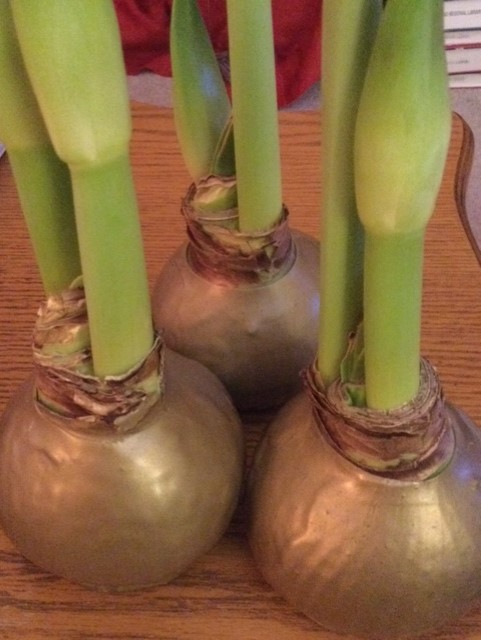YORKTON - Gardeners, it seems strange to type out “2023”, doesn’t it! I wish you happy new year and may the coming year bring you good health and good gardens!
Make a cup of tea and sit down for a few minutes, I’d like to tell you about something very interesting and marvellous that we received over the holidays. Our dear cousins gave us a very special gift of 3 amaryllis. But not just any amaryllis. These are waxed amaryllis. Have you heard of them? They are new to us!
The three amaryllis bulbs are large, about the size of a grapefruit, and are covered with wax. They stand on the tabletop, and, imagine this, they do not need soil or water! The box says that they contain all the water and nutrients they need to flower. They just sit there, all by themselves, and they look very beautiful and elegant, like three pieces of sculpture.
As I write this to you, they have buds beginning, but we don’t know yet whether they will be all the same colors or different colors.
They are beautiful and interesting, and we know how gardeners love to try something new! I’ll keep you posted about the colors. We thank our very sweet and very thoughtful cousins for gifting us with this delightful surprise!
Ukrainian Christmas is almost here. One of the key dishes of the Christmas meal is kutia, wheat with poppyseed. This dish has been cooked for thousands of years. Yes, thousands. There are ethnographic (the study of a culture) studies that tell us that Ukrainians have been making kutia since the neolithic era, possibly as long as ten thousand years ago, when farming practises began.
The Holy Dinner always begins with kutia. I have read some interesting things about this beloved and very familiar food. It is sometimes called “God’s Dish” and it is a special connection and sign of unity with generations who have left us and generations who are yet to come. Perhaps you are familiar with the tradition of the head of the house throwing the first spoon of kutia at the ceiling: I read that this is a way of greeting the ancestors and inviting them to join in the family meal. I also read that if some kernels stuck to the ceiling, it was a sign of bounty in the coming year. (Both explanations sound lovely, but neither one specified who would clean up afterwards!)
Back to tradition. As we would expect, the wheat itself has very special meaning, representing life in it’s whole growing cycle: it grows as a beautiful and bountiful plant ,then when it dies, the kernels give life in two ways: to us when they become flour for food, and also to become seeds that produce life in a new wheat crop again.
Besides a delicious flavoring in our baking, poppyseed also has symbolic significance for the kutia, representing the ones who have gone before. I read that sometimes a small bowl of kutia is left out on the table or windowsill, to include the deceased family in the meal.
Such a beautiful tradition, and such a delicious tradition! One more tradition involving wheat comes from Hungary and other European cultures: it is planting St. Lucy’s Wheat in a small bowl on December 13. The wheat comes up by Christmas and signifies bounty for the coming year if the wheat is nice and healthy at Christmas. We tried it this year, and how lovely it was on those very cold days to see the tender green shoots of the growing wheat! Visit the hort society at www.yorktonhort.ca Thank you to our friends at YTW for their great work each week. Khrystos Rozhdayetsia!






